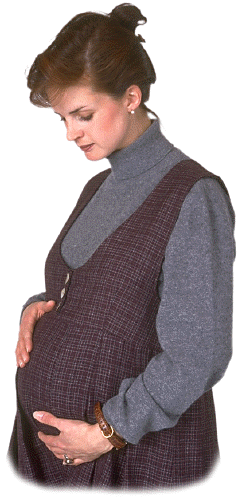PMS Facts and Statistics
As many as 90% of all women will have to deal with the aches, pains and emotional stress of Premenstrual Syndrome or PMS at some time during their reproductive years while 30% to 40% of all women will have symptoms distressing enough to interfere with their everyday lives. Some of the symptoms of premenstrual syndrome include abdominal bloating, acne, anxiety, backache, breast swelling and tenderness, cramps, depression, food cravings, fainting spells, fatigue, headaches, insomnia, altered sex drive, swelling of the fingers and ankles, and personality changes such as drastic mood swings, outbursts of anger, violence, and thoughts of suicide.
 On the average, menstruation begins at twelve or thirteen years of age and ends with menopause. The typical cycle lasts about 28 days with the first day of the cycle being the first day of bleeding. The menstrual cycle is regulated by changes in the endometrium or the membrane lining of the uterus and is divided into the follicular and the ovulation and secretory phases. On the average, menstruation begins at twelve or thirteen years of age and ends with menopause. The typical cycle lasts about 28 days with the first day of the cycle being the first day of bleeding. The menstrual cycle is regulated by changes in the endometrium or the membrane lining of the uterus and is divided into the follicular and the ovulation and secretory phases.
- Follicular (Proliferative) Phase: This phase begins at the end of the menstrual flow and lasts for ten to fourteen days. During this phase the uterine lining grows and thickens, the ovaries produce estrogen, and some of the ovarian follicles are stimulated until their eggs have nearly tripled in size. At the end of this phase ovulation occurs.
- Ovulatory Phase: This phase only lasts for 36 hours and involves the release of the egg into one of the fallopian tubes.
- Luteal (Secretory) Phase: Once ovulation has occurred this phase begins. During the average fourteen days of the secretory phase progesterone and estrogen stimulate the uterine lining in preparation for implantation by a fertilized egg. If fertilization doesn't occur, the tissue that has been prepared degenerates and estrogen and progesterone levels drop as the tissue sloughs off and is shed during menses.
Premenstrual Syndrome is a reoccurring condition that affects women during the one to two weeks before menstruation begins (the luteal phase) and disappears at the end of a full flow of menses. During the entire menstrual cycle female hormone levels (estrogen, progesterone, prolactin, etc.) are constantly in flux as the body prepares the uterus and the other female organs for a fertilized egg. Abnormalities in any of these areas or in any of the areas that regulate the release of these hormones can cause PMS and/or other menstrual problems.
PMS can also be caused or aggravated by stress, genetics (PMS is more likely in a woman whose mother had PMS), age (women in their thirties and forties are more likely to experience PMS than younger women), the number of children a woman has had (women with more children are more likely to suffer from PMS than women with fewer children), alcohol, sugar and caffeine intake, and hypothyroidism and depression. And, as with most things, PMS can be affected by the amount of exercise you get and by diet. Studies have shown that women who exercise regularly are less susceptible to negative moods and experience fewer and less severe physical PMS symptoms than women who do not exercise or who exercise infrequently.
|
According to Doctor Guy Abraham, "nutrition is the single most important factor in whether or not a woman will have PMS."
|
Proper nutrition also plays a vital part in combating and eliminating premenstrual syndrome. According to Doctor Guy Abraham, "nutrition is the single most important factor in whether or not a woman will have PMS. This is why we see so much PMS among women in their thirties. Most of them have been pregnant, which has depleted their bodies of nutrients, so they're more likely to be deficient in the B vitamins and magnesium." [From: Healing with Vitamins, By the editors of Prevention Health Books, Rodale Press, Inc., Emmaus, Pennsylvania, 1996, "Premenstrual Syndrome," p. 460]
Calcium is also very important for the woman who suffers from PMS. One study in which women took 1200 mg of calcium daily showed a 50% reduction in PMS symptoms after three months. Another study showed that women who are most likely to suffer from PMS consumed 62% more refined carbohydrates, 275% more refined sugar, 79% more dairy products, 78% more sodium, 53% less iron, 77% less manganese, and 53% less zinc than those who practiced the "Standard American Diet," which in and of itself is far from the ideal diet.

|

